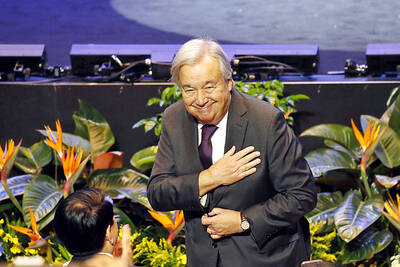Scientists have managed to make old skin in mice young again after just two weeks of treatment by blocking a single gene, a study released on Thursday showed.
They did this by creating genetically modified mice with a defective gene that can be switched off so that their cells ceased to age when a cream was applied to the skin.
While still years from being determined safe for use in humans, the discovery offers hope of one day reversing many age-related illnesses and injuries as the technique may work on any kind of organ or tissue.
"Previous work has shown you can reverse aging by really drastic measures" such as a near starvation diet or "connecting the circulation of a young animal to an old animal," said lead researcher Howard Chang of the Stanford University School of Medicine in California.
"Here we show that aging in mouse skin can be reversed by blocking a single gene," he said.
"These findings suggest that aging is not just a result of wear and tear, but is also the consequence of a continually active genetic program that might be blocked for improving human health," Chang said.
Chang's team uses a complex computer analysis to discover that a single protein is the "shared driving force for the genetic changing associated with aging in lots of different tissues," he said in a telephone interview.
They then designed a genetically modified mouse in which this gene would switch off only when the animal was quite old.
"We even engineered it in such a way that we can actually turn off that defective version in some parts of the animal and not the rest," he said.
"We made this animal in such a way that it would respond to a cream that contained a specific chemical and we put the cream only on one half of the animal ... so the rest of the animal was still old," he said.
Two weeks later, both the gene expression profile and the tissue characteristics of the treated skin had reverted to that of a young mouse.
While the idea of taking a full-body dip in the fountain of youth might sound like a fantastic idea, there are good reasons to target only specific areas of the body for treatment.
The same gene that stimulates aging, NF-eB, is also involved in the immune system and other cell functions so if it was blocked in the entire body it could cause death, Chang said.
The next step is to see if blocking the gene will also reverse aging in other tissues such as the heart and lungs.
There is also the question of whether the effect will last if the treatment is continued or if the tissues will rapidly revert back to their previous aged state if the treatment is stopped.
Other researchers are already looking at ways to block the gene in humans using drugs because of its role in the immune system, Chang said.
Further experiments will show if one of those drugs can effectively be used to block the gene in targeted ways for anti-aging purposes.
"What I hope won't happen is a lot of people calling me up to make an appointment to have their face rejuvenated," Chang said.
Even if researchers are able to develop a safe way to use the treatment on humans, there will always be serious risks involved in genetic intervention.
"A lot of people in the field shy away from the fountain of youth and rejuvenation and focus on extracting quality of life," he said.
The study will be the cover story of the Dec. 15 edition of the journal Genes and Development.

DOUBLE-MURDER CASE: The officer told the dispatcher he would check the locations of the callers, but instead headed to a pizzeria, remaining there for about an hour A New Jersey officer has been charged with misconduct after prosecutors said he did not quickly respond to and properly investigate reports of a shooting that turned out to be a double murder, instead allegedly stopping at an ATM and pizzeria. Franklin Township Police Sergeant Kevin Bollaro was the on-duty officer on the evening of Aug. 1, when police received 911 calls reporting gunshots and screaming in Pittstown, about 96km from Manhattan in central New Jersey, Hunterdon County Prosecutor Renee Robeson’s office said. However, rather than responding immediately, prosecutors said GPS data and surveillance video showed Bollaro drove about 3km

Tens of thousands of people on Saturday took to the streets of Spain’s eastern city of Valencia to mark the first anniversary of floods that killed 229 people and to denounce the handling of the disaster. Demonstrators, many carrying photos of the victims, called on regional government head Carlos Mazon to resign over what they said was the slow response to one of Europe’s deadliest natural disasters in decades. “People are still really angry,” said Rosa Cerros, a 42-year-old government worker who took part with her husband and two young daughters. “Why weren’t people evacuated? Its incomprehensible,” she said. Mazon’s

‘MOTHER’ OF THAILAND: In her glamorous heyday in the 1960s, former Thai queen Sirikit mingled with US presidents and superstars such as Elvis Presley The year-long funeral ceremony of former Thai queen Sirikit started yesterday, with grieving royalists set to salute the procession bringing her body to lie in state at Bangkok’s Grand Palace. Members of the royal family are venerated in Thailand, treated by many as semi-divine figures, and lavished with glowing media coverage and gold-adorned portraits hanging in public spaces and private homes nationwide. Sirikit, the mother of Thai King Vajiralongkorn and widow of the nation’s longest-reigning monarch, died late on Friday at the age of 93. Black-and-white tributes to the royal matriarch are being beamed onto towering digital advertizing billboards, on

POWER ABUSE WORRY: Some people warned that the broad language of the treaty could lead to overreach by authorities and enable the repression of government critics Countries signed their first UN treaty targeting cybercrime in Hanoi yesterday, despite opposition from an unlikely band of tech companies and rights groups warning of expanded state surveillance. The new global legal framework aims to bolster international cooperation to fight digital crimes, from child pornography to transnational cyberscams and money laundering. More than 60 countries signed the declaration, which means it would go into force once ratified by those states. UN Secretary-General Antonio Guterres described the signing as an “important milestone,” and that it was “only the beginning.” “Every day, sophisticated scams destroy families, steal migrants and drain billions of dollars from our economy...